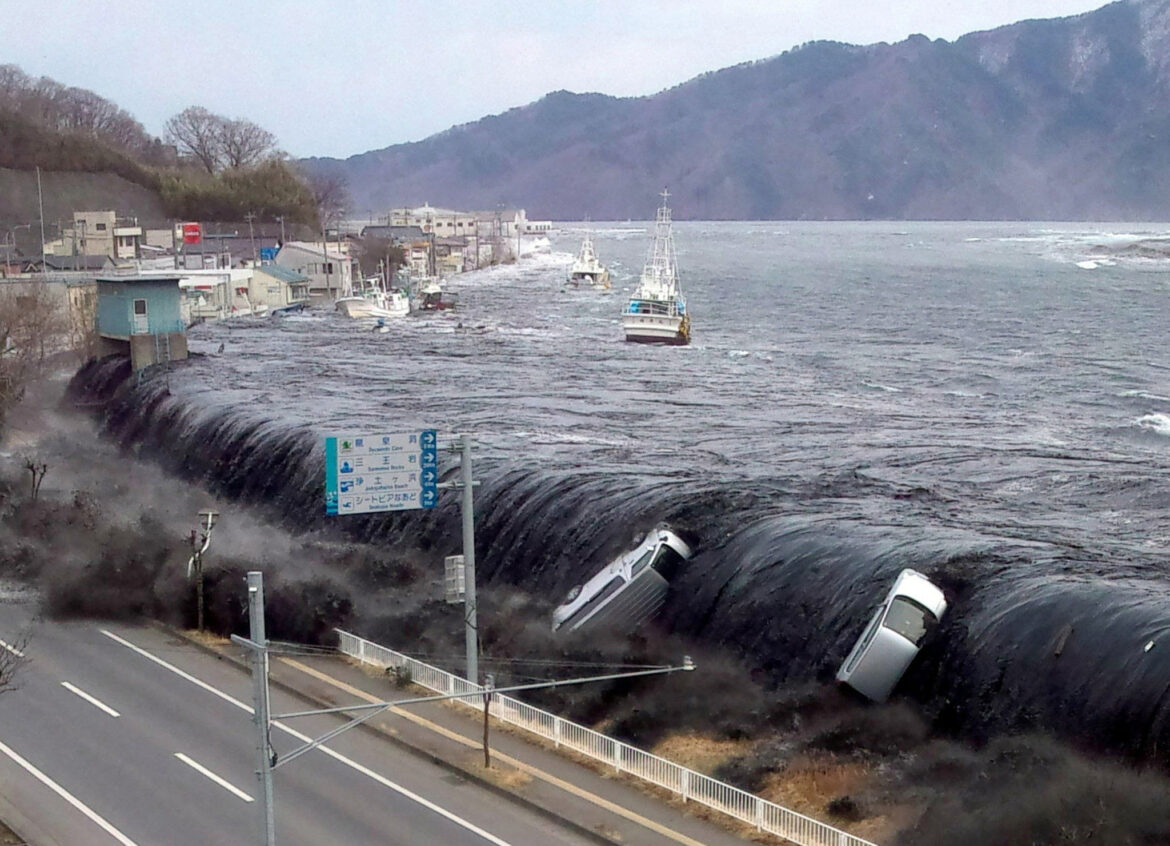Giant tsunamis could be triggered by underwater landslides caused by climate change in the Antarctic, according to a study.
Scientists found that climate change episodes millions of years ago may have led to underwater landslides – creating huge waves that crashed on to shores in South America, New Zealand and South-East Asia.
Teams drilled hundreds of metres under the sea bed in the Antarctic and found evidence that during previous periods of global warming three million and 15 million years ago, loose sediment layers may have slipped, causing the massive waves.
They now believe that as climate change heats oceans, landslides could again trigger tsunamis.
Antarctica’s continental margins pose an “unknown submarine landslide-generated tsunami risk” to populations and infrastructure in the Southern Hemisphere, researchers said in the paper, which was published in science journal Nature.
While the exact trigger for the region’s past underwater landslides is not known for certain, researchers believe the most likely reason is the melting of glacier ice in a warming climate.
“Large landslides along the Antarctic margin have the potential to trigger tsunamis, which may result in substantial loss of life far from their origin,” said Amelia Shevenell, an associate professor of geological oceanography at the University of South Florida’s College of Marine Science.
“This study illustrates the importance of scientific ocean drilling and marine geology for understanding both past climate change and identifying regions susceptible to natural hazards to inform infrastructure decisions,” Dr Shevenell said.
:quality(70)/cloudfront-eu-central-1.images.arcpublishing.com/thenational/R4LACVV4MRG55JOJJQQS7GUZRM.jpg)
The landslides were discovered in the eastern Ross Sea in 2017 by an international team of scientists during the Italian Odyssea expedition.
Scientists revisited the area in 2018 as part of International Ocean Discovery Programme Expedition 374, where they collected sediment cores extending hundreds of metres beneath the sea bed.
Analysis of the samples found microscopic fossils which showed what the climate would have been like in the region millions of years ago and how it created the weak layers deep under the Ross Sea.
“Submarine landslides are a major geohazard with the potential to trigger tsunamis that can lead to huge loss of life,” said the University of Plymouth’s Jenny Gales, a lecturer in hydrography and ocean exploration.
“Our findings highlight how we urgently need to enhance our understanding of how global climate change might influence the stability of these regions and potential for future tsunamis.”
Hundreds killed
Scientists do not know how big ancient ocean waves might have been.
But researchers in the paper mentioned two relatively recent submarine landslides that generated huge tsunamis, killing hundreds.
In 1998, a tsunami in Papua New Guinea unleashed 15m waves that killed 2,200.
And in 1929, the Grand Banks tsunami generated 13m waves that killed about 28 people off Canada’s Newfoundland coast.


